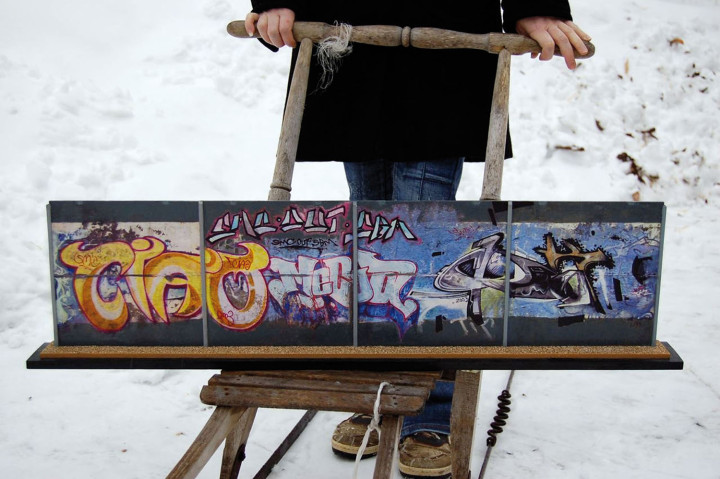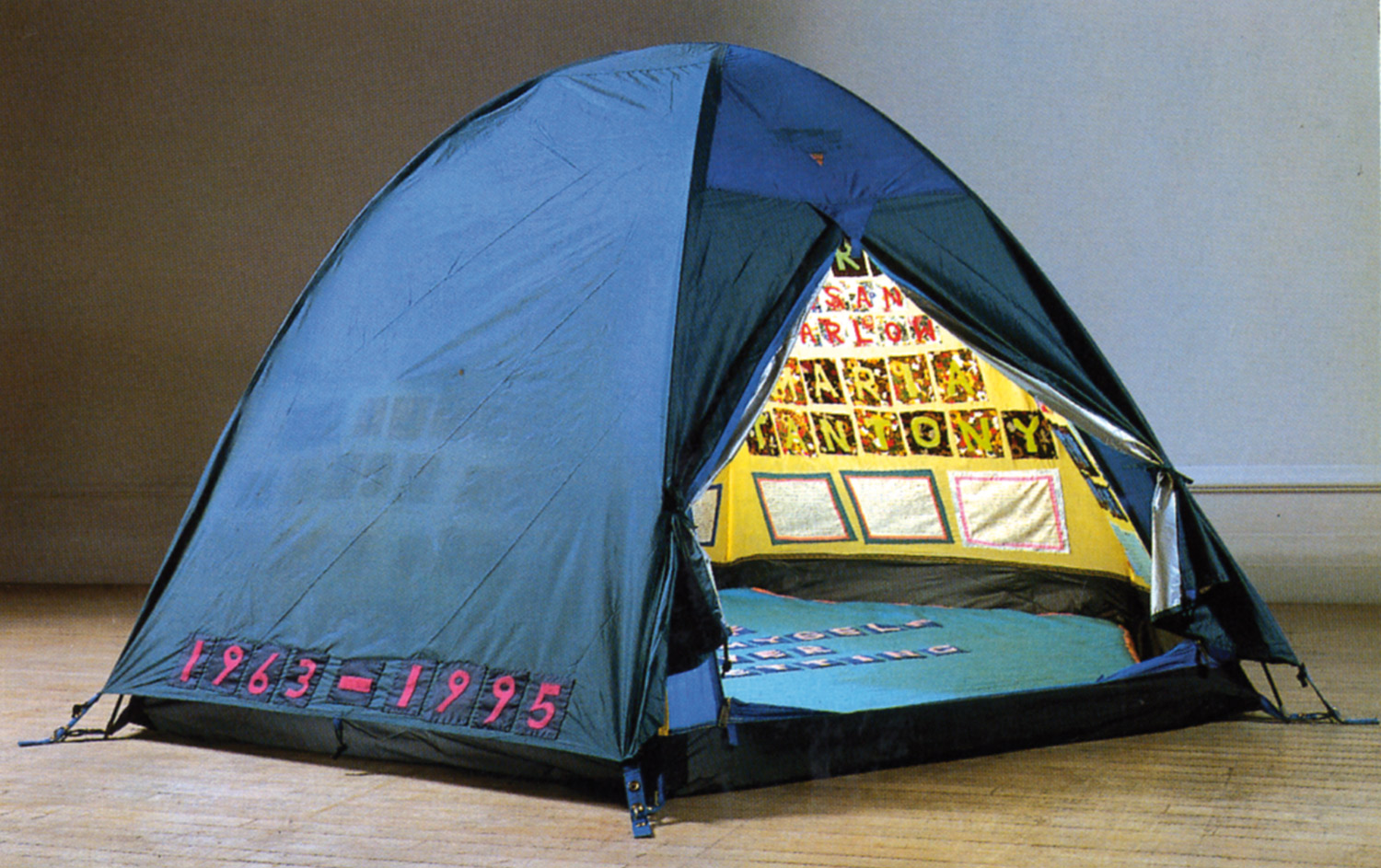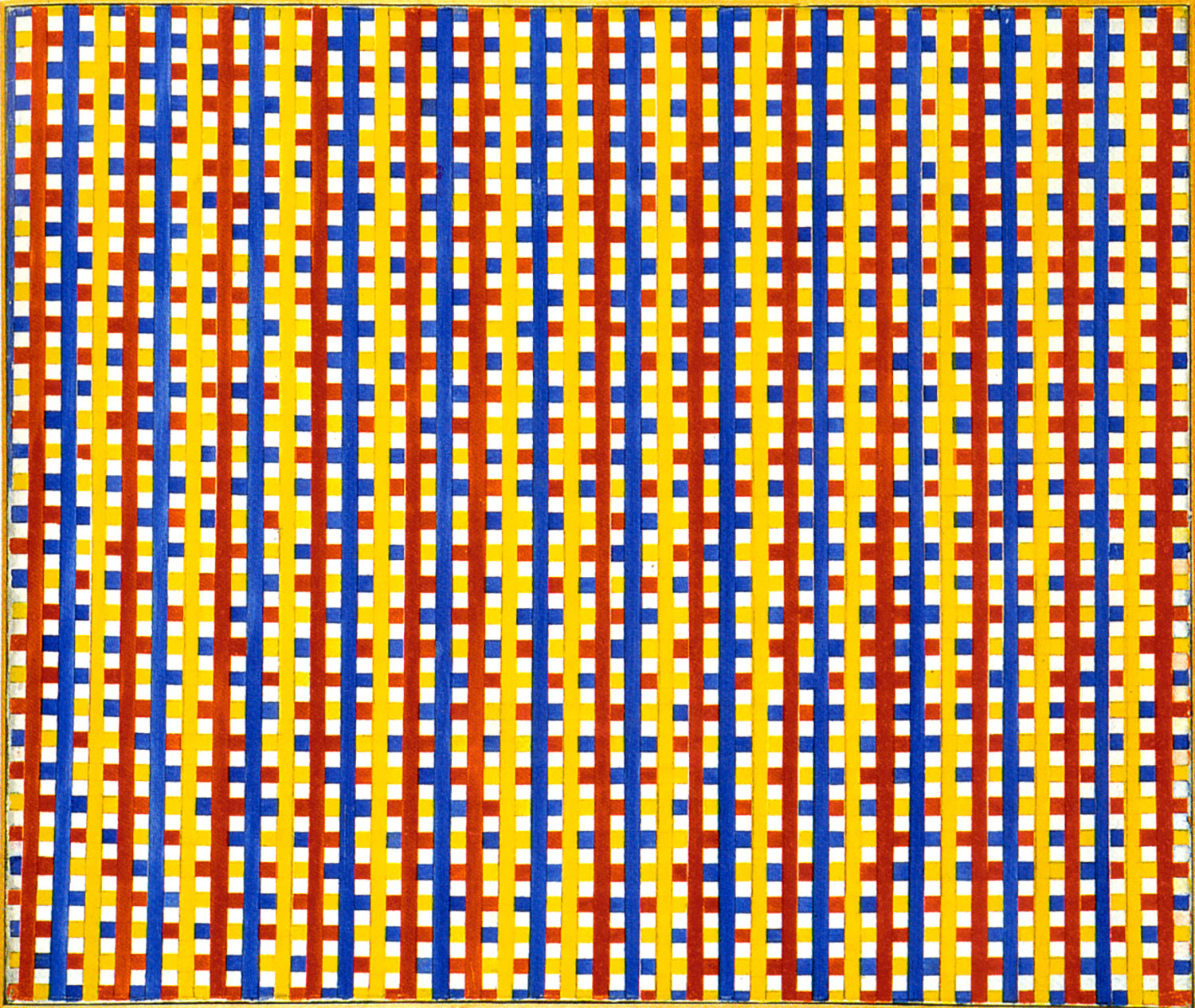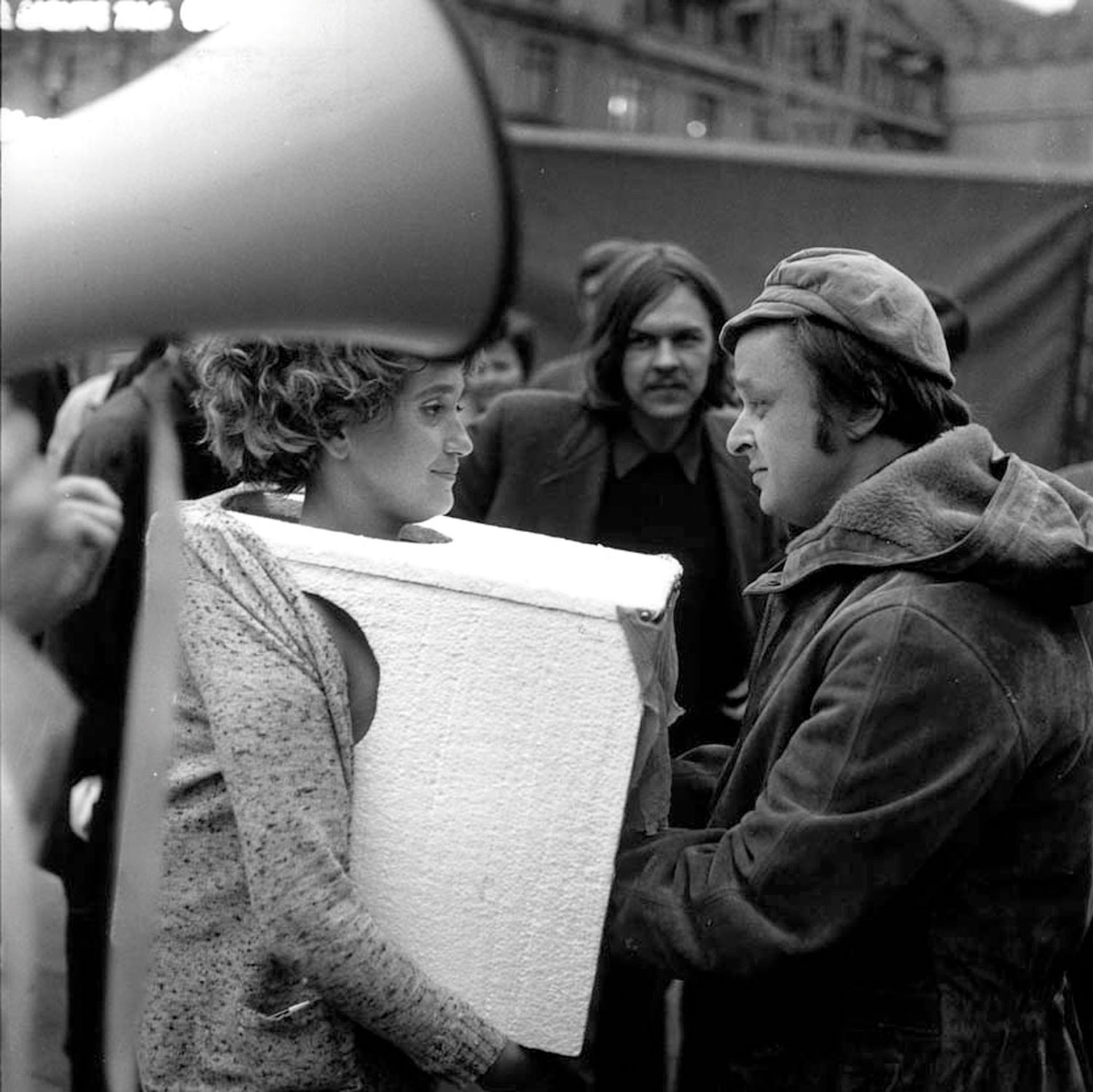
Aimee Walleston: The video Morrissey Foretelling the Death of Diana (2006) is very accomplished, and it’s your first video piece as an artist. It’s a visual montage and voiceover narration that illustrates a rather obsessively researched conspiracy theory you found on a Morrissey fan website, which links lyrics from The Smiths’ “The Queen is Dead” to the death of Princess Diana. Did discovering this conspiracy narrative make you feel like you had to make the piece?
Lars Laumann: The reason I started doing it was that I encountered Mrs. Berliner-Mauer, a woman who felt in love with and married the Berlin Wall. I felt like I needed to do something with her story, which I eventually did for Berlinmuren (2008), but I had never worked with video, so I wasn’t really sure how to do it. I started doing the Morrissey piece basically to teach myself video editing. But then I decided I couldn’t do things halfway.
AW: What made you feel you needed to reinterpret that particular conspiracy narrative as a video?
LL: I had become obsessed with the aesthetics of the homemade documentary Loose Change, which describes a conspiracy behind 9/11, and I became interested in the Internet rhetoric of this kind of conspiracy theory.
AW: Loose Change reportedly started out as a fictional film, but in the end I suppose it became quite real for the filmmakers and for many who have viewed it. Your Morrissey piece is made entirely with appropriated footage. Do you feel like you incorporate Morrissey’s tactic of appropriation — he was famous for using Warhol stars on his cover — in your own work?
LL: Yes, but it’s not only his cover stars. It’s also in his writing. He appropriated a lot of his lyrics from films of the ’50s and ’60s. There are visual elements within the piece that, if you’re a die-hard Smiths fan, you get the visual story. And sometimes, during the piece, my appropriations and Morrissey’s overlap.
AW: Your work seems more connected to Morrissey’s technique of appropriating and meshing things like classic literature with lowbrow film than to art history.
LL: ’80s Morrissey was important to me. He introduced me to a lot of film and literature that I probably normally wouldn’t have known about. I grew up in the Norwegian arctic in the age of the fanzine. Today on the Internet fan sites are obsessive about him. Everything Morrissey does is discussed to the smallest detail on these sites, and normally I don’t really care to read about it. But then this Canadian guy starts writing about the phenomenon of the link between Morrissey and Diana, and people on the sites have been horrible to him, totally missing the beauty of it. So I got interested. They feel perhaps that this is not a valid way to talk about Morrissey’s music. For me this is a much more valid and true way to talk about music, or art and literature, for that matter.

AW: In 2008, you began a video project that was much more cinéma verité in a way than the Morrissey piece. Shut Up Child, This Ain’t Bingo (2009) documents your friend, Norwegian artist Kjersti Andvig, and her romantic and artistic relationship with an American man on death row, Carlton Turner. Andvig knitted, to scale, a reproduction of Turner’s cell. The piece was inspired by Les Tricoteuse, women who, during the French Revolution, would stand at the guillotine and knit until the head separated from the body of the executed individual. At that moment, the knitter would drop a stitch to mark their death. Did you know that you were going to film Kjersti and Carlton when you went to see them in Texas?
LL: Not when I first visited. In a way Kjersti — who became temporarily Christian and believed Turner would ‘quicken,’ rise from the dead after his execution — used religion to cope with the situation there, and I used the camera.
AW: Your relationship with Carlton is not defined in the film the way Kjersti’s romance with him is.
LL: From the beginning it was clear to me how I should tell this story. Maybe the viewer doesn’t realize this but Carlton was a really good friend of mine as well. I saw that Kjersti was doing something beautiful for this guy. I mean, he went peacefully to his death, and that is a rare thing on death row. There was nothing else that legally could be done at that point and Kjersti did the only thing she could. It is exceptional to know that your friend or lover would be murdered. But it’s not exceptional that someone might have a death sentence, because of a terminal illness or something like that. So I think everyone can relate to it, in a way.
AW: Did you find that you wanted to represent Carlton in a particular way — did you want to create an elegy?
LL: I never really considered that; I mean, what’s his story? He spent the last ten years in prison, in isolation. The strange thing is, in this slaughterhouse, everybody involved talked about death in a very biblical way. It’s like Easter all year round. But it was all very ugly. And I think in the video we look ugly with the way we were behaving. The reason we are doing “thumbs ups” in some parts, for example, is because if we didn’t, Kjersti believed he wouldn’t resurrect. Someone died, and we did all we could do. It is so complicated, and capital punishment can never be dignified in any way.
AW: The piece is like a portrait of what it means to be an artist, and to live fully in your art — which is something you say that Kjersti taught you. As an artist you tend not to have boundaries and limitations in thought or in what you create. And of course Carlton has lived a life completely opposite to this. He has only had boundaries and limitations.
LL: With Shut Up Child, I wanted to tell the story in a really ugly way. Rub the audience’s face in the shit, and make them really uncomfortable — physically uncomfortable.
AW: It is really uncomfortable. And perhaps that’s why people sometimes think that it’s a mockumentary: they don’t want to believe that’s real.
LL: People think that reality television is real. I have no control over that. One problematic thing I really wanted to keep in the film was that, right before execution, we do the “thumbs up.” I think it might be difficult for people to understand why we’re doing that. I thought it was important to have it there, because that’s what happened. And it’s not a popularity contest. Kjersti won’t win Miss Congeniality, at least in this case. But in reality she would. With our background, the death penalty, you don’t even discuss it. The brutality and the primitivism is already a given to me.
AW: And people have questioned if Kjersti was acting…
LL: In a way she was acting, because she became Christian, she really did. She took on a role, like a saint. She totally eradicated herself, but it was a true role, not for the camera or for an audience other than Carlton.

AW: There seems to be a parallel, for me, between Kjersti and Franny from J. D. Salinger’s Franny and Zooey (1961): their desire to find, in religion, truth and transcendence. Your newest piece, Kari & Knut (2010) uses footage from an Iranian-produced adaptation of Franny and Zooey, and also weaves in the story of Helen Keller. Keller was condemned for plagiary, and her book How I Became a Socialist (1912) was censored.
LL: With Kari & Knut, I view the footage as a found object. The copyright issue is important. Salinger didn’t allow any adaptations of his works, so the only place that film could be made is Iran, or maybe North Korea, because there is no trade between America and Iran. It is interesting to me that Salinger’s story not only transcended cultural boundaries, but also found its way through diplomatic and economic boundaries to be retold.
AW: And the piece you are working on currently is kind of a second part to Kari & Knut, exploring the Zooey section of Salinger’s book. In it, you use text from the Swedish author Selma Lagerlöf. You said that Lagerlöf is viewed as a sweet, maternal figure in Sweden but that her writings, which celebrate Sweden’s landscape and are widely read, have undertones that could be viewed as racist. You use Helen Keller whom you’ve described as “such a nice person,” as a literary reference in Kari & Knut, yet she is kind of the opposite of Lagerlöf, in a way. Are there heroes and villains in your work?
LL: No, because I don’t think there are heroes and villains; I think maybe they are the same. Lagerlöf and Keller only relate to each other as part of this idea of censorship. Lagerlöf herself censored the Swedish province of Halland in her novel The Wonderful Adventures of Nils, because she believed it was racially impure. Keller, on the other hand, was censored because of plagiarism and socialist phobia. However, I also recently discovered that they were both followers of the 17th-century scientist and occult mystic Emanuel Swedenborg, who I have been reading recently. It makes perfect sense that they would be. Keller advocates his teachings in her autobiography, and many of Lagerlöf’s novels echo his ideas, like her brilliant The Miracles of Antichrist. My new piece is called Helen Keller (and the great purging bonfire of books and unpublished manuscripts luminating the dark). It’s sort of a love letter to Sweden. It is the world’s best country — the idea of it, at least. And I love the idea of it, even if it’s not true. Your lover has some flaws, but you still love them.





